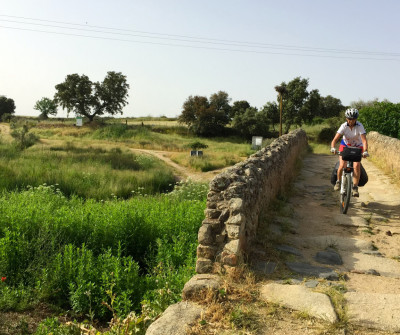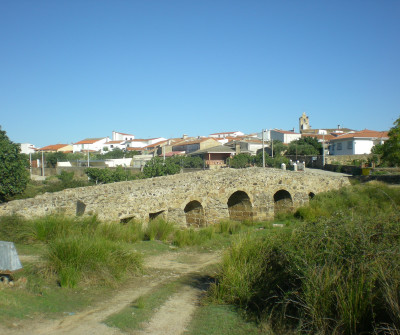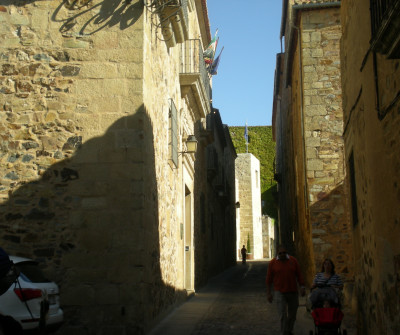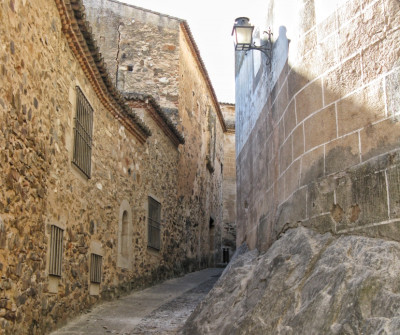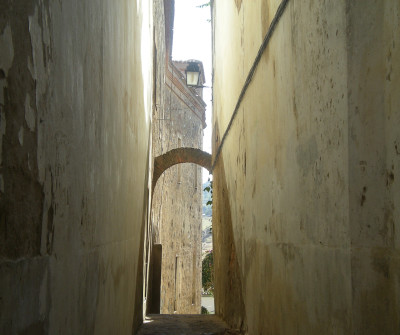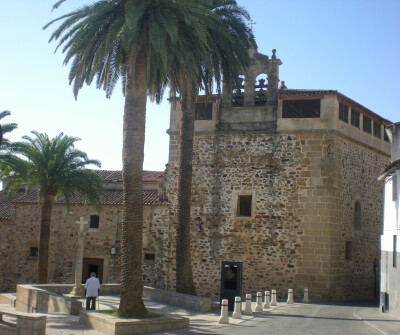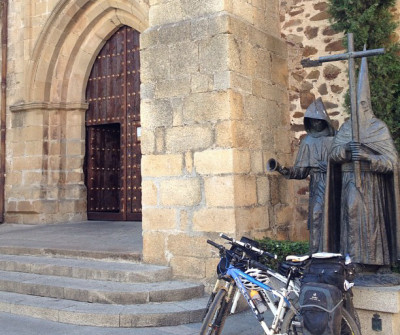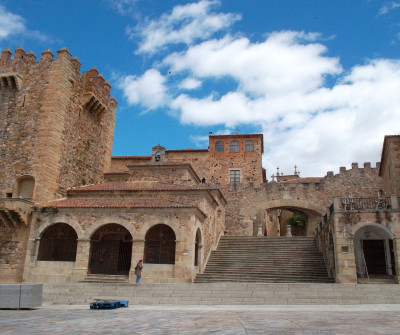Olive and holm oak groves will take you for more than 7 kilometres from Alcuéscar to the bridge over the River Ayuela. On the other side of the river, you will find the village of Casas de Don Antonio. If you wish to visit it, you will have to leave the Camino and get to Plaza de España where you will see the Cruz de la Horca and the church of Nuestra Señora de la Asunción.
READ MOREBack on the Vía de la Plata, the path runs parallel to the N-630, going past two Roman milestones and crossing the Roman bridge over the Santiago stream. It is time to decide whether you want to take a shortcut to the village of Aldea del Cano or continue your walk on the Camino.
The route goes past the village of Valdesalor, with a rest area, to continue to the hilltop of Las Camelias, which most pilgrims prefer to reach through the main road, as this is less strenuous. Open ground precedes the city of Cáceres, which you can access through the Ronda de San Francisco and the Calle da las Damas.
The old town of Cáceres has very interesting architectural and historic sites, especially from the Renaissance. The city is very well preserved and that is why it is a UNESCO World Heritage Site. It is divided into two areas by the city wall. Some of its most remarkable monuments are the churches of Santa María and San Francisco Javier, Romanesque and Baroque, respectively; the palaces of Las Veletas and Toledo-Moctezuma and the Torre de Carvajal. Besides, if you stroll around the city, you will find other churches, palaces and quaint squares that will amaze you.
Tips from our postmen and women
What to do and see in Caceres?

The Museo Yussuf al Borch, in the city centre of Cáceres, makes for an interesting visit. This is a two-storey house of Moorish style, a culture that was present for several centuries in our city”.


 Filter
Filter